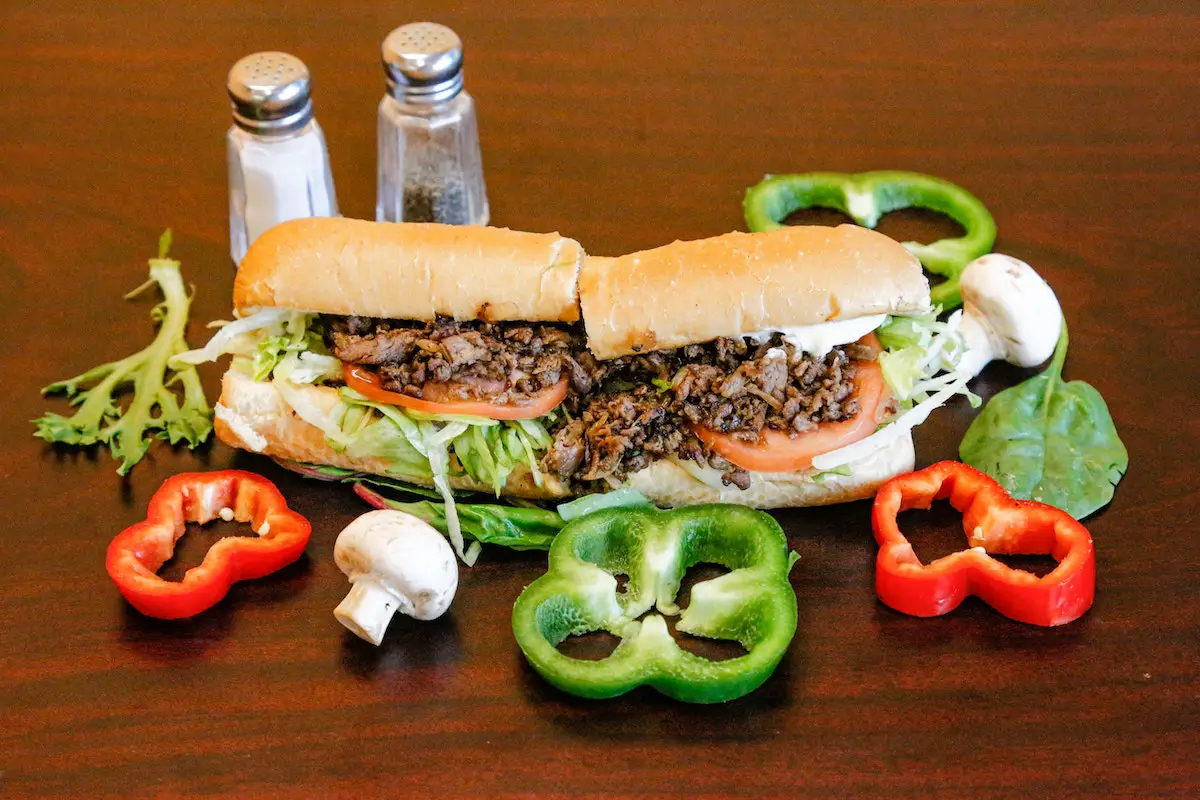Nominated-Day or Next-Day
Nominated-Day or Next-Day

Have you ever struggled to choose between a chopped cheese and a cheesesteak sandwich?
Both are undeniably delicious, but the main difference is that a Chopped Cheese Sandwich uses ground beef, while a Cheesesteak uses beef steak strips or thinly sliced beef.
In this article, we’ll explore the world of chopped cheese vs cheesesteak, comparing and contrasting these iconic sandwiches.

The chopped cheese sandwich hails from New York City, specifically the borough of the Bronx.
It is a relatively recent creation, having gained popularity in the 1990s.
On the other hand, the cheesesteak has a longer history, originating from Philadelphia in the 1930s.
Both sandwiches have become synonymous with their respective cities, each boasting a dedicated following.
A chopped cheese sandwich features ground beef, onions, and American or cheddar cheese, all cooked together on a griddle.
The mixture is then chopped and combined, creating a melty and flavorful filling.
This is typically served on a hero roll with lettuce, tomatoes, and condiments like mayonnaise and ketchup.
Some variations include adding jalapeños or different types of cheese for a unique twist on the classic sandwich.
A traditional cheesesteak consists of thinly sliced ribeye steak cooked on a griddle, often with onions.
The meat is then topped with cheese, usually provolone, American, or the ever-popular Cheese Whiz.
The cheesy concoction is served on a long, soft roll, with optional additions like peppers, mushrooms, or even pizza sauce for those seeking variety.

While both sandwiches feature beef, cheese, and onions, the similarities end there.
Chopped cheese uses ground beef, while cheesesteak utilizes thinly sliced ribeye.
The preparation of each sandwich also differs, with chopped cheese being, well, chopped, and cheesesteak ingredients cooked separately.
In terms of taste, a chopped cheese has a more cohesive flavor profile, while a cheesesteak boasts distinct layers of taste and texture.
Nutritionally, both sandwiches are indulgent, but the specific nutritional values may vary depending on the ingredients used.
If you prefer a more savory and hearty sandwich, the chopped cheese might be the perfect choice for you.
Its combination of flavors melds together for a satisfying bite. Conversely, if you enjoy a cheesy and creamy sandwich, the cheesesteak, particularly when topped with Cheese Whiz, will hit the spot.
Ultimately, the decision boils down to personal preference and the specific taste and texture you crave.
Cheesesteaks and Philly cheesesteaks are similar sandwiches popular in the United States.
However, the main difference between the two is that a Philly cheesesteak is a specific type of cheesesteak that originated in Philadelphia, Pennsylvania.
It is made with thinly sliced ribeye steak, grilled onions, and melted cheese, typically served on a hoagie roll.
There are tonnes of popular sides to enjoy with your Philly Cheesesteak that you should try along with it!
A cheesesteak, on the other hand, can refer to any sandwich made with sliced or chopped steak and cheese and can be served on a variety of different breads or rolls.
No, chopped cheese is not the same as a Philly cheesesteak. While both are popular sandwiches made with meat and cheese, a Philly cheesesteak is made with thinly sliced ribeye steak and melted cheese, while a chopped cheese is made with chopped ground beef and cheese on a hero roll.
No, chopped cheese is not just a cheesesteak. While both sandwiches have similarities in terms of the ingredients, preparation, and regional popularity, they are two distinct dishes with their own unique flavors and textures.
A Philly cheesesteak is traditionally made with thinly sliced ribeye steak cooked on a griddle with onions and served on a hoagie roll with melted cheese. While some sandwich variations may include chopped or shredded steak, the original and most traditional version is made with thinly sliced steak.
In the battle of chopped cheese vs cheesesteak, both sandwiches offer unique and enticing flavors and textures.
While they share some similarities, their distinct characteristics make them stand out in their own right.
So why not try both sandwiches and appreciate the mouthwatering qualities each has to offer?
Your taste buds will thank you.
Comments
Leave a comment